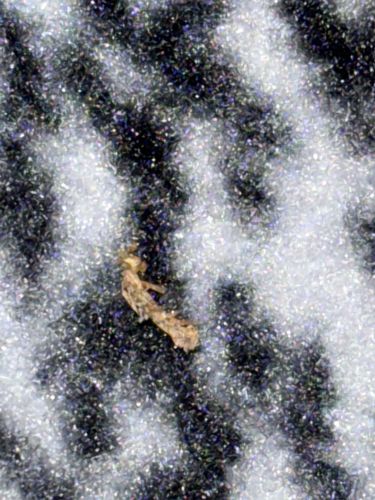Carpet Beetle Larva (likely varied carpet beetle or black carpet beetle)
Scientific Name: Varies by species, e.g., Anthrenus verbasci (varied carpet beetle) or Attagenus unicolor (black carpet beetle)
Order & Family: Coleoptera, Dermestidae
Size: 2-5 mm in length

Natural Habitat
Indoors, commonly found in homes, museums, and warehouses. They prefer dark, undisturbed areas like under furniture, along baseboards, in closets, or within stored items.
Diet & Feeding
They are scavengers. Primary diet includes natural fibers such as wool, silk, fur, feathers, and leather. They also feed on dead insects, pet hair, and food crumbs. They do not feed on synthetic fibers like nylon or polyester.
Behavior Patterns
The larvae are the destructive stage, causing damage to textiles and other materials. They are slow-moving and often prefer to stay hidden. Adult carpet beetles are typically found outdoors feeding on pollen and nectar, but can fly indoors to lay eggs. The larvae shed their skins multiple times as they grow, leaving behind characteristic bristly brown skins.
Risks & Benefits
Potential risks include significant damage to household items like carpets, clothing, furniture, and museum specimens made of natural fibers. They do not bite humans, but some people may experience skin irritation from contact with their shed bristles. There are no direct benefits to humans, as they are primarily considered pests in indoor environments.
Identified on: 9/5/2025